BMGT380-MIDTERM ONE Exam Questions and Answers
Document Content and Description Below
Types of Laws - ANSWER 1. Constitutional Law 2. Statutory Law 3. Common Law 4. Equity 5. Administrative Regulations and Agency Decisions 6. Treaties 7. Ordinances 8. Executive Orders Cons... titutional law - ANSWER -At the state level and the federal level- the bottom line is that both the US constitution and each of the 50 state constitutions are sources of constitutional law -Often deals with personal rights Statutory Law - ANSWER -Laws created by elected representatives in Congress or a state legislature -There are federal statutes, which get enacted and passed by congress, and state statutes, which get passed by state legislatures and signed by the governors in each state -synonymous Common Law - ANSWER -judge made law as they decide cases not governed by statutes or other types of law -both at the state (more) and the federal level -Precedent and Restatements Precedent - ANSWER -one limit on common law -means that similar cases should be decided similarly, so that if a judge gets a case he can refer to prior cases that were similar -Process became formalized in doctrine of "stare decisis" meaning, let the decision stand Restatements - ANSWER collections of suggested rules, written by prominent lawyers and prominent law professors write them, but they are not actually laws. These will be referred to in a number of cases and because they're very persuasive for judges Equity - ANSWER Provided several remedies not available in the common law courts Administrative Regulations and Agency Decisions - ANSWER -Administrative agencies obtain ability to make law through a delegation or grant of power from the legislature -Two types: Two types of law made: administrative regulations and agency decisions Administrative Regulations - ANSWER Regulations basically fill in the gaps in statutes, and they have the same force and effect as the statute itself. This means that when there are missing details in an area of law, these details get filled in when a case comes about that requires them. Agency Decisions - ANSWER legally binding Treaties - ANSWER made by the president with foreign governments and approved by 2/3 of US senate become the supreme law of the land Ordinance - ANSWER -State governments have subordinate units that exercise certain functions, just as school districts that have limited powers -a law at the local level. College Park could enact an ordinance with zones, such as creating a residential only zone. Executive Orders - ANSWER -the President issuing an order and bypassing Congress. President or state governor enforces law but has no law making powers -However, sometimes have limited power to issue laws, which normally result from a legislative delegation Priority Rules (what happens if there are conflicts—which law trumps the other?) - ANSWER 1) Constitutions trump all sources of law, and the US constitution trumps state constitutions. 2) Federal statutes trump conflicting state statutes 3) Statutes trump both the common law and administrative regulations 4) Administrative Regulations trump the common law Ways to classify law- - ANSWER 1) Criminal vs. Civil 2) Substantive law vs. procedural law 3) Public vs. Private Criminal vs. Civil - ANSWER Criminal- a state or federal prosecutor charges an individual or an entity for committing a crime Civil- Mostly deals with obligations that private parties owe to each other. An example could be patent infringement, contract breaching, etc. Substantive law vs. procedural law - ANSWER -Substantive deals with everyone's rights and duties within society -Procedural is basically the rules of the game; what are the rules that deal with a specific lawsuit and how should it be conducted. Public vs. Private - ANSWER Public- includes constitutional law, criminal law, could include the securities law. Private- would mainly be about contract breaching, like me suing my former landlord for breach of contract. What is the purpose/function of law? - ANSWER 1. Peacekeeping- what criminal laws are involved with 2. Controlling government power- mainly deals with constitutional law, like the whole idea of executive orders. 3. Promoting people's reasonable expectations 4. Promoting economic growth through free competition- mainly the antitrust laws 5. Promoting social justice- an example could be employer/employee relations 6. Protecting the environment Legal Reasoning - ANSWER 1) Case Law 2) Statutory Interpretation Case Law - ANSWER Courts find the appropriate legal rules in prior cases called precedents Statutory Interpretation - ANSWER A lot of laws are ambiguous, maybe because Congress drafted a statute and didn't realize how ambiguous it was. Sometimes, Congress doesn't want to deal with tough issues, so they make it unclear, knowing that eventually the courts will have to clarify and deal with it. How does the judge interpret an ambiguous statute? There are four rules that they use for interpretation: - ANSWER 1. Plain meaning rule- if a judge is looking at a statute and he comes across certain words or phrases that are unclear, the judge will interpret them according to their ordinary meaning, rather than a second meaning that might appear in the dictionary. 2. Look at legislative history- the judge is able to see if Congress actually intended something different than the plain meaning. Not all sources of legislative history are of equal value to judges Sources: a. Hearings. b. Committee reports. c. Amendments or failed amendments 3. Try to figure out the general public purpose of the law. An example: a law designed to deal with sex discrimination. The judge can interpret it consistent with the purpose of dealing with sex discrimination. 4. Prior interpretation: has some other judge in a prior case looked at the same law and figured out what it meant. Limits on the power of the courts - ANSWER Judges can't do whatever they want 1) Courts don't issue advisory opinions- there has to be an existing dispute between parties. 2. Scrutiny of Public Opinions- the judge could be exposed to public ridicule because opinions are published, creating a limitation on them to do whatever they want. 3. Precedent 4. Appeal reversal/fear of reversal: decisions can always be appealed and judges don't like that because that means the appeal court believes the judge made the wrong decision. 5. Political factors: judges want to get reelected, impeachment, recalled, Courts don't issue advisory opinions - ANSWER a. Ripeness- the case has to have a genuine controversy. Example: someone is suspicious that the other will breach a contract. This suspicion isn't enough to go to court, there is no genuine controversy, the case isn't ripe, the judge will throw the case out. b. Mootness- a settlement agreement was reached, so there's no longer a dispute, so the case is moot. c. Plaintiff (the one who is suing) must have standing to sue- standing means you have a tangible stake in the outcome. d. Just an observation: an exception to this is that courts will issue something called declaratory judgments. This is when they go to court and ask to issue an order to say what the rights and duties of the parties are, even if nobody has been damaged by anything yet. i. Example: Martin Gaye's kids thought the blurred lines infringed on the copyright of their father's songs. So TI and Thicke went to court and asked for a declaratory judgment that there was no copyright infringements. Three kinds of State Courts: - ANSWER 1) Courts of limited jurisdiction 2) Trial Court 3) Appeals Court Courts of limited jurisdiction - ANSWER o Deals with smaller cases, often only one particular kind of case. There's either a dollar limit on how much you can sue for, or a subject matter limit. o Probate court usually deals with wills and estates o In MD these courts are called District Courts o Never a jury, the judge decides the case o Fairly informal, usually no lawyers involved o They aren't courts of record- a court of record is where during the preceding, there's a reporter who is recording everything. Doesn't happen here because its not cost effective or necessary. Trial Court - ANSWER o Typically no subject matter restrictions or $ limits o They are courts of record o Usually one per county o In MD called circuit courts, some states called County courts o Where most cases go to start with at the state level o **midterm** If you filed in small claims court (see above) and lost, you would take your appeal to a trial court. Appeals Court - ANSWER -one or two levels depending on the state you're in -Maryland • First level is special appeals • Second is court of appeals o They look at if the judge committed some sort of serious error during the trial, or if the jury messed up in some way o Appeals court wont look at new evidence that wasn't presented at the trial, generally. ***Exam questions: An appeals court cannot consider new evidence. We have this rule mainly in the interest in efficiency. Jurisdiction - ANSWER A courts power to hear a case and issue a binding decision; a decision that would control the parties and require them to do something under the courts order. Three kinds of Jurisdiction - ANSWER 1) Subject Matter 2) In personam 3)In rem- Subject Matter Jurisdiction - ANSWER the court's power to decide the type of dispute presented to it. An example would be that a criminal court only has jurisdiction to hear criminal cases. In personam - ANSWER -basically jurisdiction over the person. There are different bases for why a court would have jurisdiction over a person: 1)Residency 2) Citizenship 3) Consent- sometimes people and company's will consent to being sued in a particular state. 4) If you are served with process (you, the defendant, are given the complaint and summons) in the state where the court is. • Consent- sometimes people and company's will consent to being sued in a particular state. Long-armed statute- - ANSWER -grants jurisdiction in two situations 1. if the defendant is doing business in the state 2. the defendant commits a wrongful act in the state • example: a person is on business in LA and causes a negligent auto accident. They can be sued in LA because they committed a wrongful act. 3. In rem - ANSWER - basically means jurisdiction over the property. If theres a dispute about property, the jurisdiction is proper wherever the property is located, and the court will have jurisdiction over the parties bases on the location of the property. In order for the jurisdiction to be proper: - ANSWER ,The court MUST have subject matter jurisdiction and EITHER in personum or in rem. a. If you have In Rem, then you wouldn't need In Personum (and vice versa). Venue at the state level - ANSWER this is which county should the case be brought. The general rule is that proper venue is whichever county is most convenient for the defendant. We don't look at what's most convenient for the plaintiff, only the defendant. Forum selection clause - ANSWER typically a paragraph in a contract which specifies where the case will be heard if there's a dispute concerning the contract. Typically, you don't see this between individuals, but more often with B2B contracts. This reduces uncertainty and is generally more efficient for the parties to know in advance where the case would be filed. 4 kinds of Federal courts - ANSWER 1) Federal District courts 2)Specialized Federal courts 3) Federal courts of appeals 4) The supreme court Federal District Courts - ANSWER similar to where most cases get started at the state level; federal equivalent to the state court. The way they are organized is that every state has at least one, and 4 is the most. Subject matter under federal district courts: - ANSWER -must have subject matter jurisdiction to hear a case, but this is slightly more complicated than at the state level. -2 basic ways for this at the federal level (but you only need one or the other): 1) Diversity jurisdiction 2) Federal question Diversity jurisdiction- - ANSWER -if the dispute is between citizens of different states and the dispute is greater than $75,000. a. A corporation is a citizen in 2 places: where it has its place of business (typically where HQ are), and where it is incorporated. What it means to be incorporated is where you file your papers to become a corporation. Federal question - ANSWER - exists if your law suit is based on a federal law or treaty, or on some provision/part of the federal constitution. In these cases, you don't need diversity jurisdiction or to meet any dollar requirement. Concurrent jurisdiction - ANSWER - both the federal and state courts have subject matter jurisdiction. An example where there isn't concurrent jurisdiction is a patent infringement, this would only be in the federal court. The defendant can remove a case: - ANSWER The defendant can file papers to remove the case to federal court, which means get in transferred. If the defendant does that, then the case will be in federal court, because at that point it's the defendants choice What if the defendant removed a case improperly and there wasn't concurrent jurisdiction? - ANSWER the case gets remanded to state court, which means transferred back down Venue at the Federal Level - ANSWER - the question is, once you pick your state, which of the federal districts do you file in - if the state only has one federal district court (like MD), then there is no issue. But if you file in Cali, which has 4 district courts, then there's a choice. Specialized Federal Courts - ANSWER if your dispute is one of these types, this is where you would file instead of federal district court. a. Bankruptcy federal courts- filing a bankruptcy petition b. Tax court- issues with the IRS c. US Court of international; trade- deals with trade disputes between the parties d. Court of claims- if you're suing the Federal government Federal Courts of Appeal - ANSWER - Just need to understand the basic concept which is that if your lawsuit is going on in a state covered by the circuit, you would take your appeal to whichever circuit covers that state. The Supreme Court - ANSWER -highest court in the country -Only takes about 80 cases/year. Very slim chances of actually getting your case heard by the SC. -A case gets to the SC by a writ of certiorari. This basically means you file cases and ask the Supreme Court to take your case. -Most of the cases the Supreme Court takes come from the Federal Courts of Appeal, when the circuits disagree. ← This means two different cases dealing with the same issue, and the federal courts of appeal come to different results, the SC would try to resolve the conflict. They also take a few that come from state supreme courts. - 9 supreme court justices who are appointed by the President for a lifetime appointment. -Occasionally, the SC functions as a trial court. The main situation where this would happen is when one state is suing another state. Civil Procedure - ANSWER -the set of rules about how civil lawsuits are conducted. • There is a Federal set of civil procedure, rules, which deals with civil cases in federal court, and each state has their own set of rules. All of the rules are pretty similar. • The US system is adversarial: plaintiff vs. defendant • The plaintiff has to prove his case through preponderance of the evidence, meaning it is more likely than not that the plaintiff should win. This is called the standard of proof. Basically more than 51% that they are right. This is the easiest standard. • In criminal cases, the standard of proof is higher, because it has to be beyond a reasonable doubt. This is the most extreme standard. • There is an intermediate standard called clear and convincing. Preponderance - ANSWER the judge or jury thinks that you, the plaintiff, thinks that either you have or have not proven that you've won the case. Intermediate standard - ANSWER -preponderance (lowest) -clear and compelling (middle) - beyond reasonable doubt (highest) How does a case get started: - ANSWER o The filing of a complaint o Complaints get served with summons o After the complaint is filed, the defendants have to respond in some way. Summons - ANSWER a notice saying you have been sued, and how many days you have to respond. Getting served - ANSWER the defendant gets physically handed the complaint and summoned. You can be served basically anywhere. an agent for service of process - ANSWER When a company incorporates, they identify an agent for service of process, who will accept a summons in case they are sued. After the complaint is filed, the defendants have to respond in some way. There are 4 choices: - ANSWER 1) Ask the plantiff for more time 2) Ignore the complaint (if you do this, the plaintiff can go to court and ask for a default judgement if you ignore it) 3) File and answer 4)Motion to dismiss Counterclaim - ANSWER -a new claim by the defendant, a claim against the person suing you -The counter claim would appear on the answer, after the affirmative defenses. Affirmative Defense - ANSWER -they are your legal theories as to why you are not responsible for whatever it is the plaintiff says you did -a successful affirmative defense enables the defendant to win the case even if the allegations in the complaint are true Motion to Dismiss - ANSWER file papers and ask judges to dismiss the case If you are the defendant and make the motion to dismiss - ANSWER • One basis for dismissal might be that you were improperly served. • If the case is thrown out, the plaintiff can take an appeal. • If the defendant refuses to throw the case out, then the defendant has to answer. • So, if you move to dismiss and lose, you then must answer. Statuate of limitiatons - ANSWER amount of time you can sue someone, maximum of 4 years in most states [Show More]
Last updated: 2 years ago
Preview 1 out of 12 pages

Buy this document to get the full access instantly
Instant Download Access after purchase
Buy NowInstant download
We Accept:

Reviews( 0 )
$8.00
Can't find what you want? Try our AI powered Search
Document information
Connected school, study & course
About the document
Uploaded On
Sep 30, 2022
Number of pages
12
Written in
Additional information
This document has been written for:
Uploaded
Sep 30, 2022
Downloads
0
Views
58

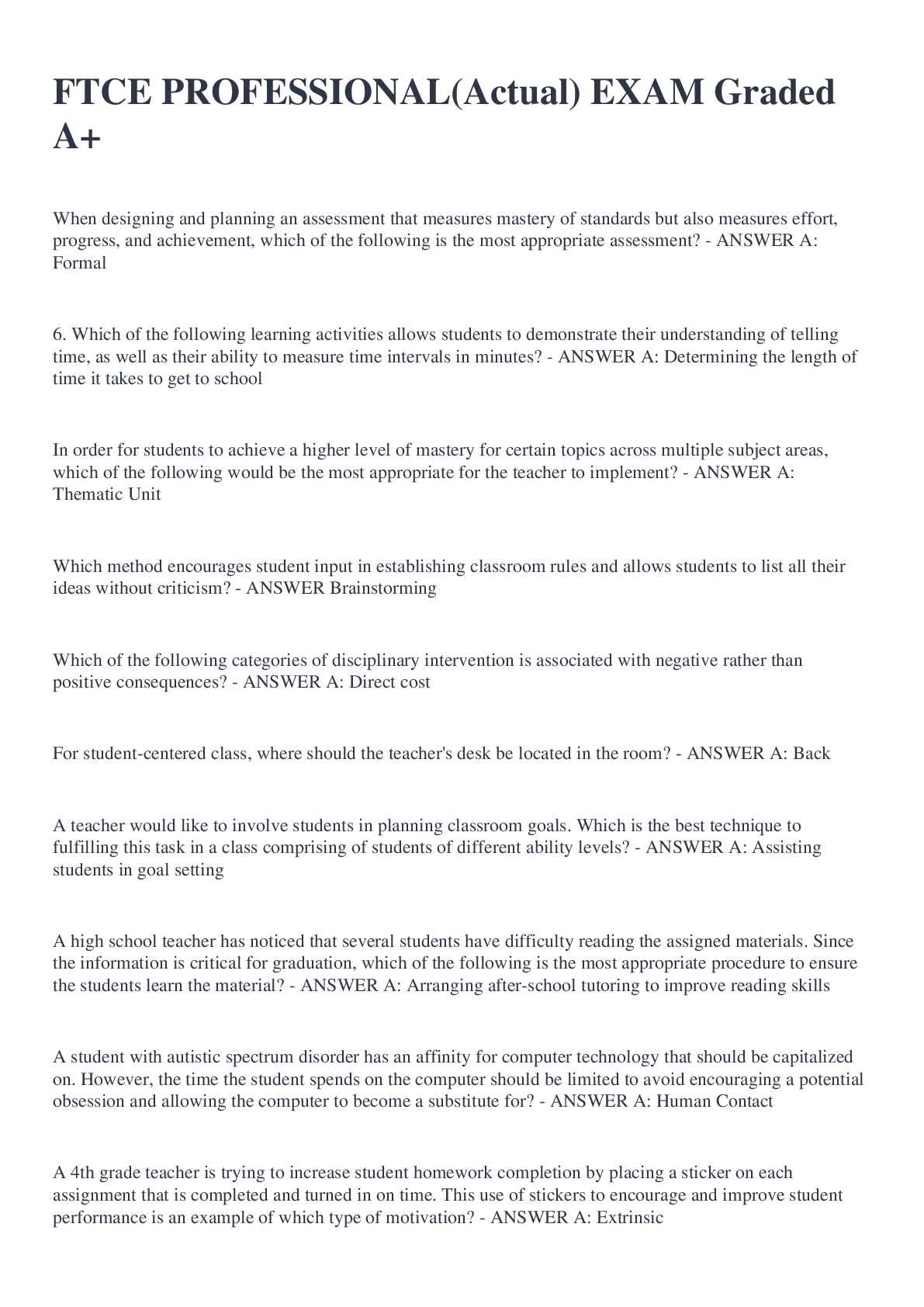
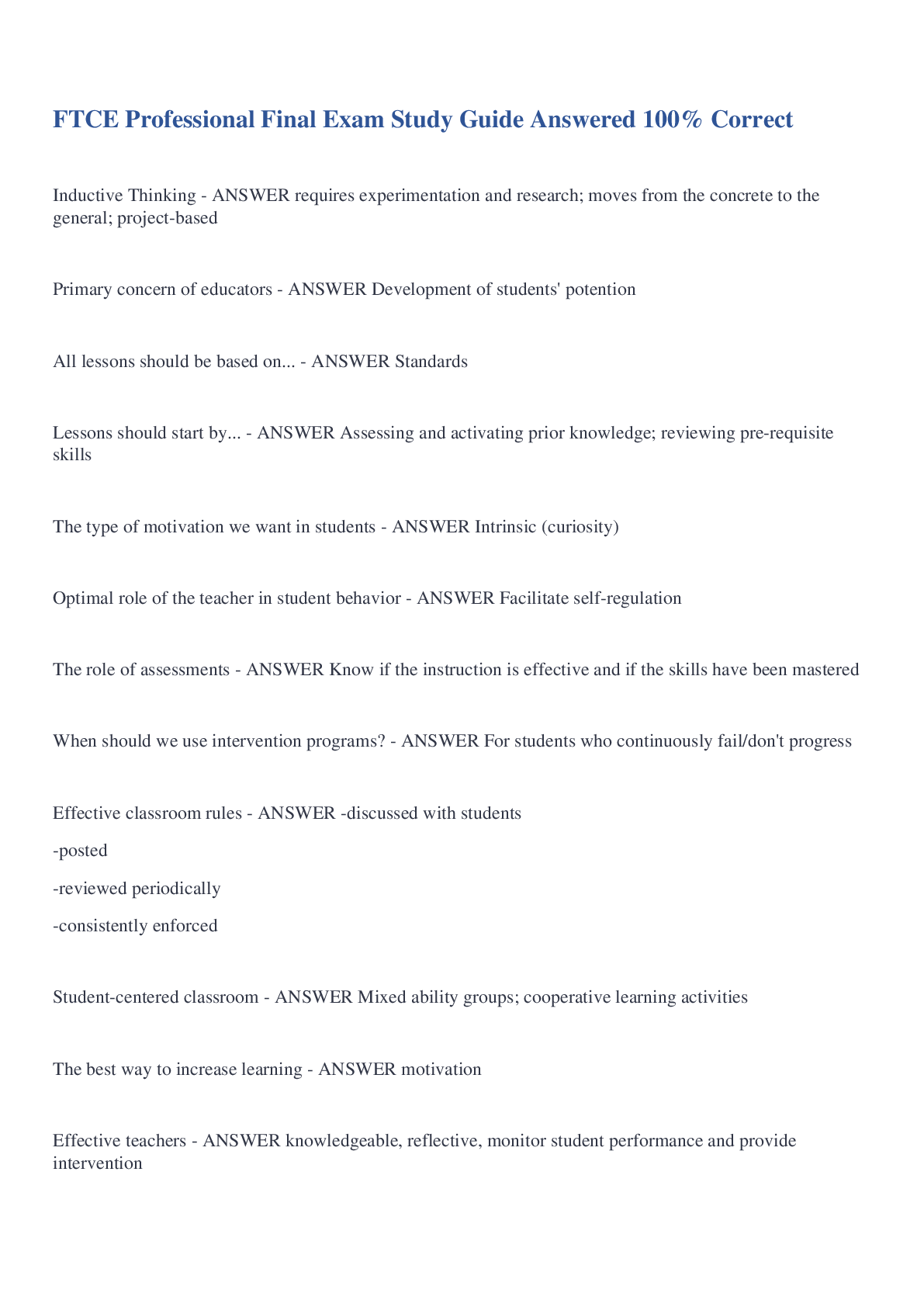
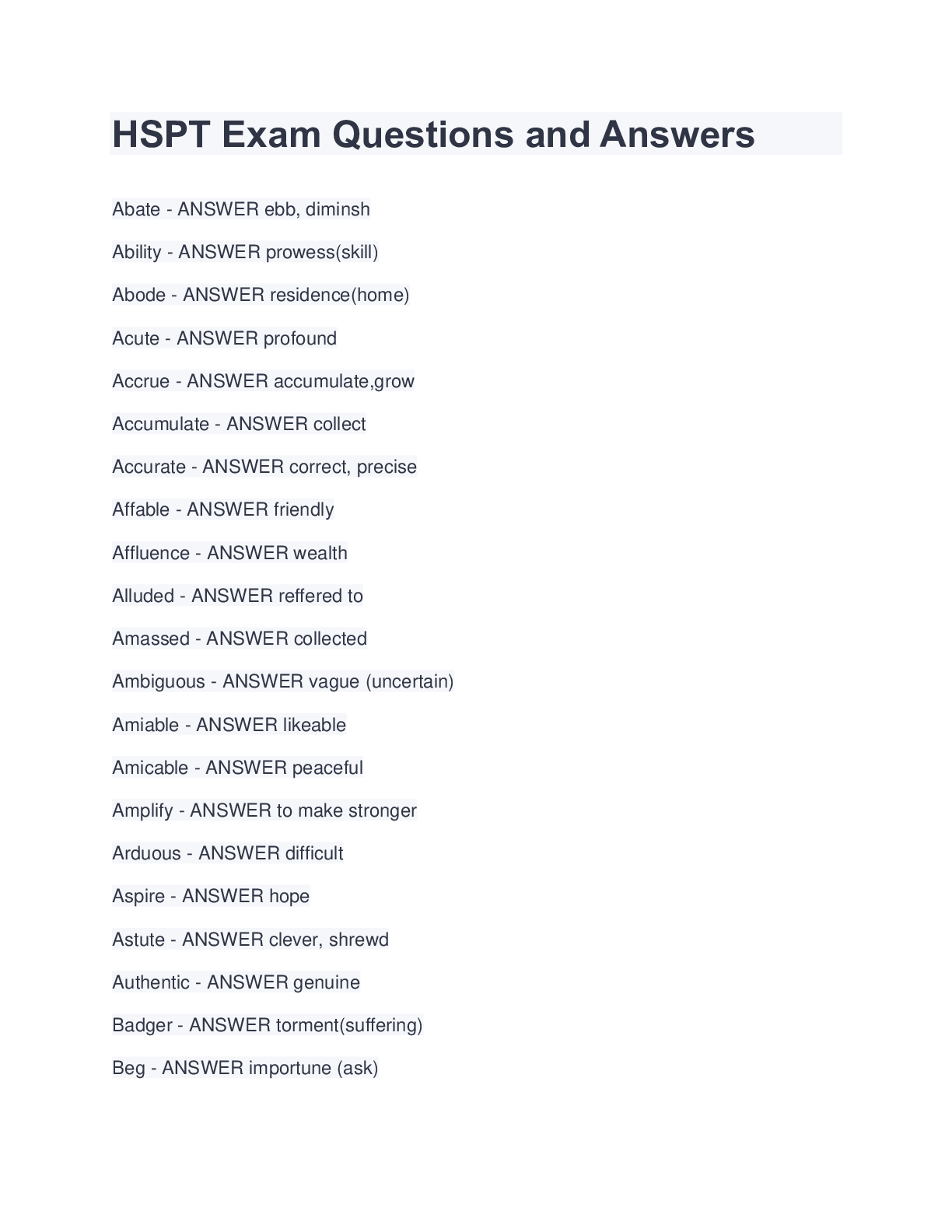
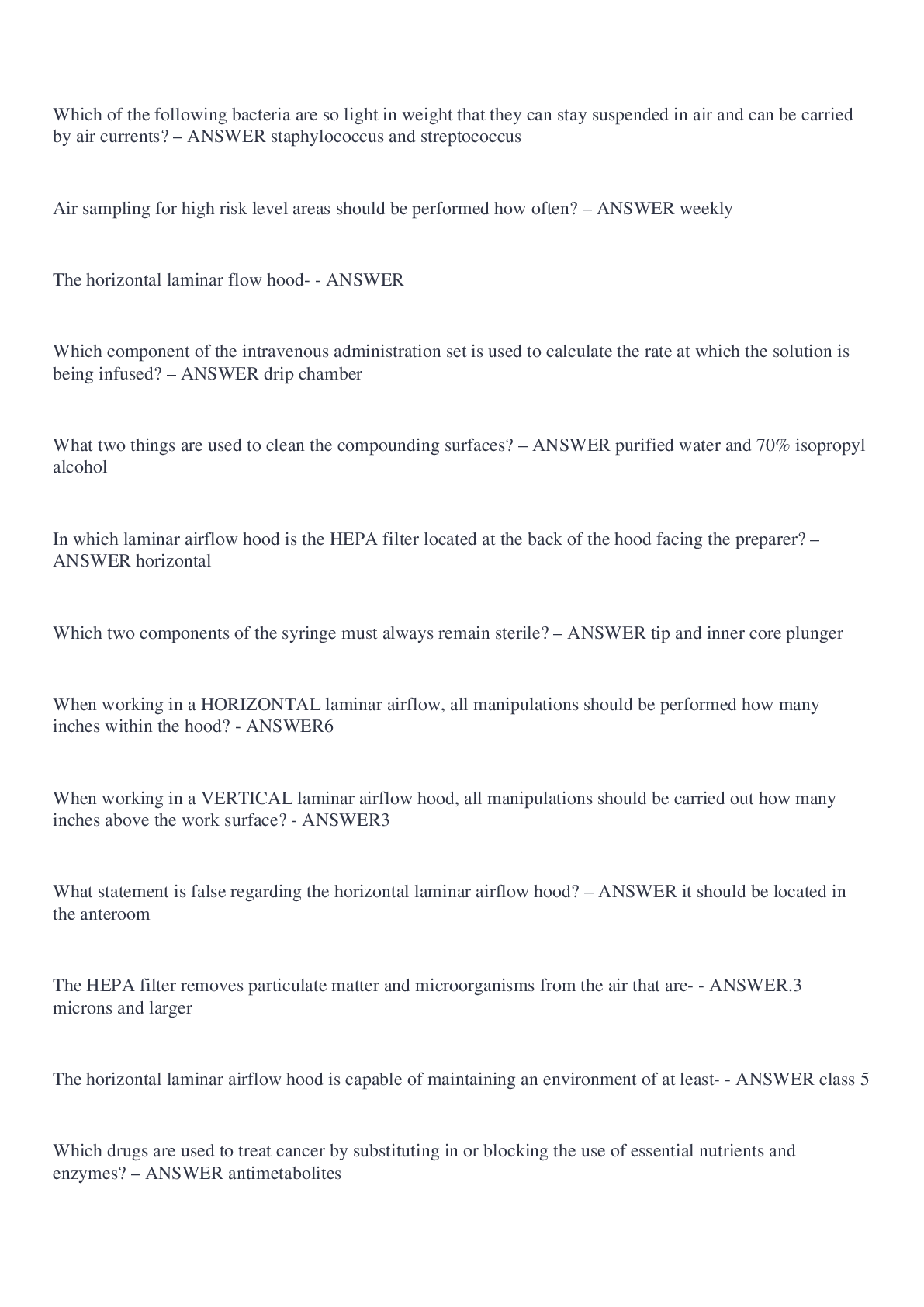

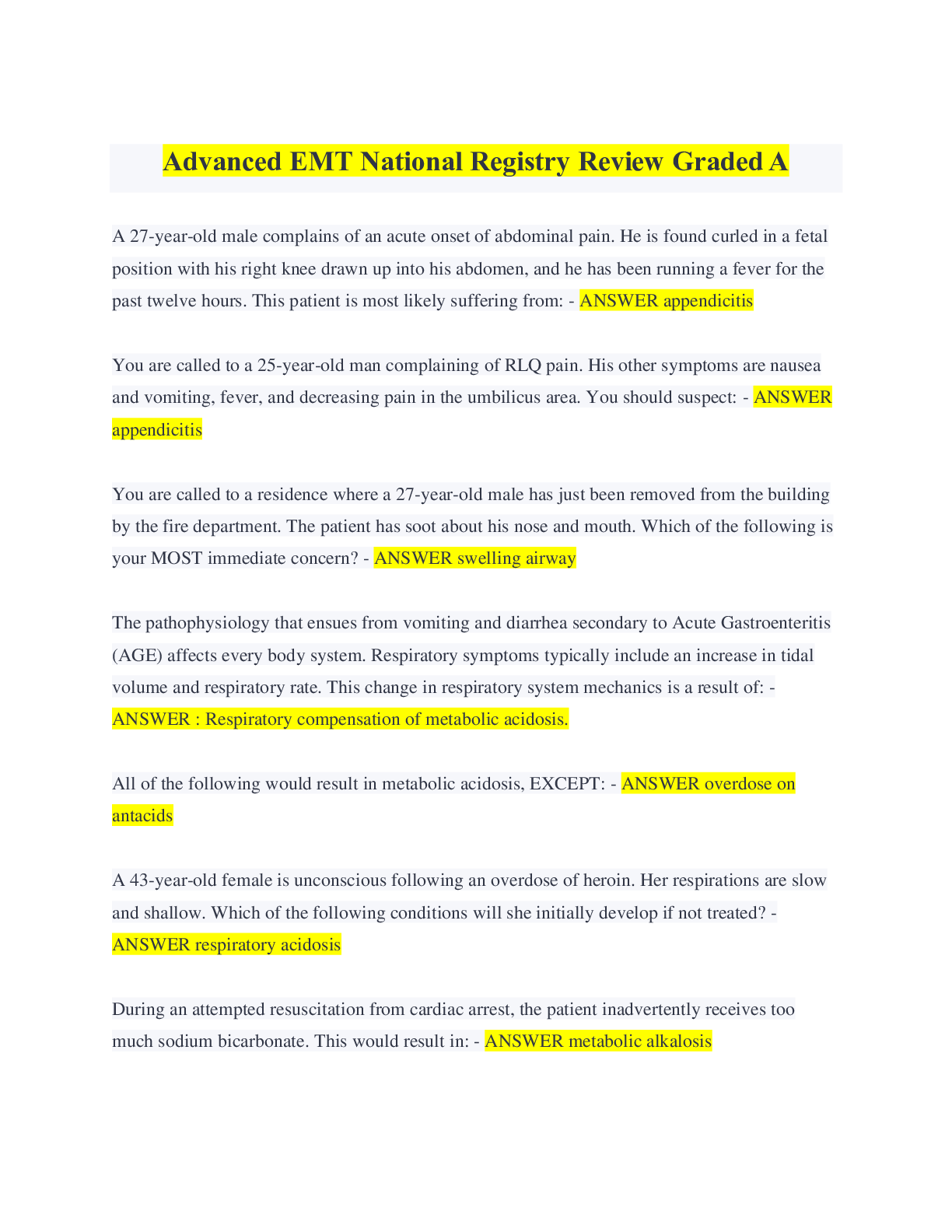
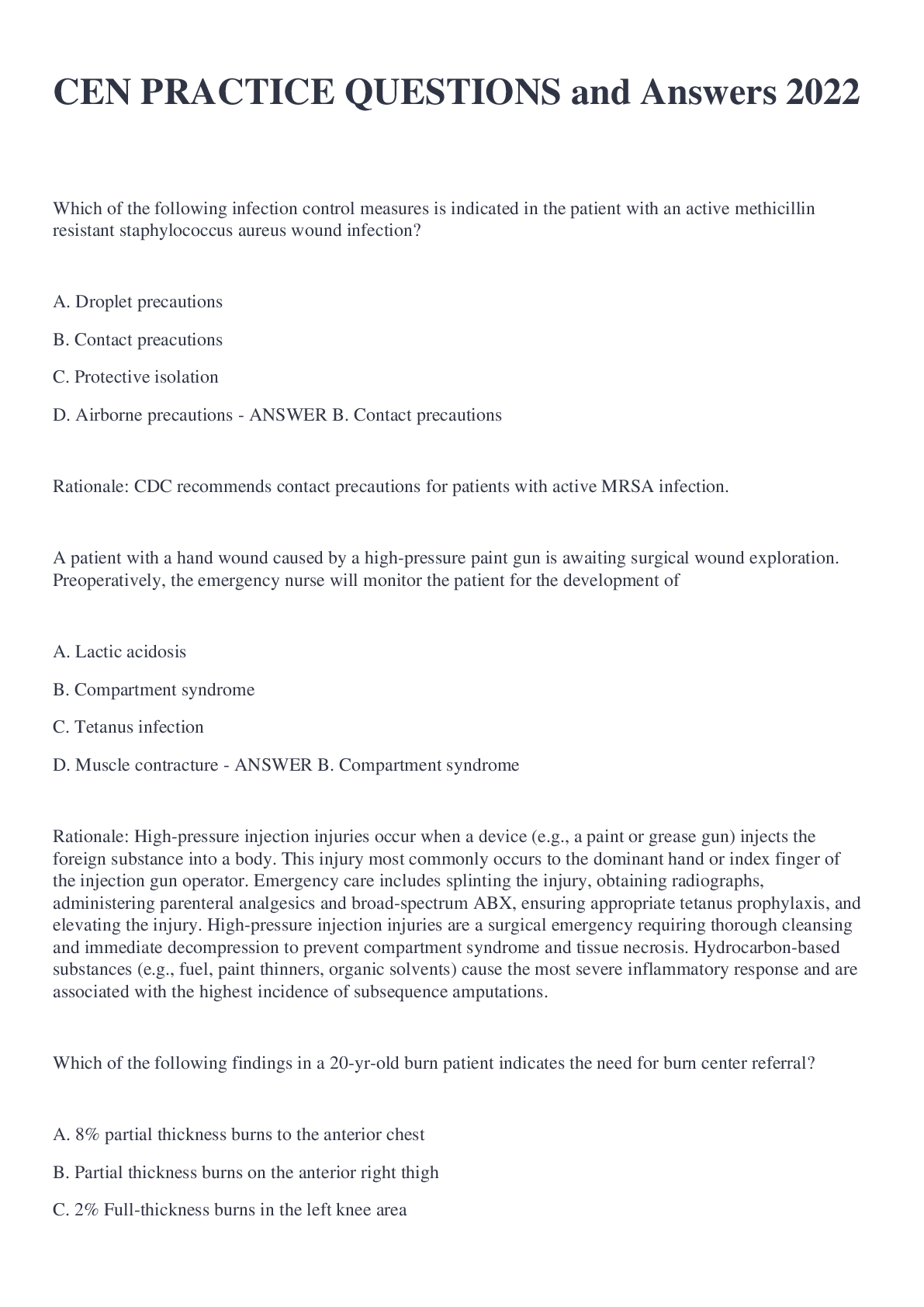
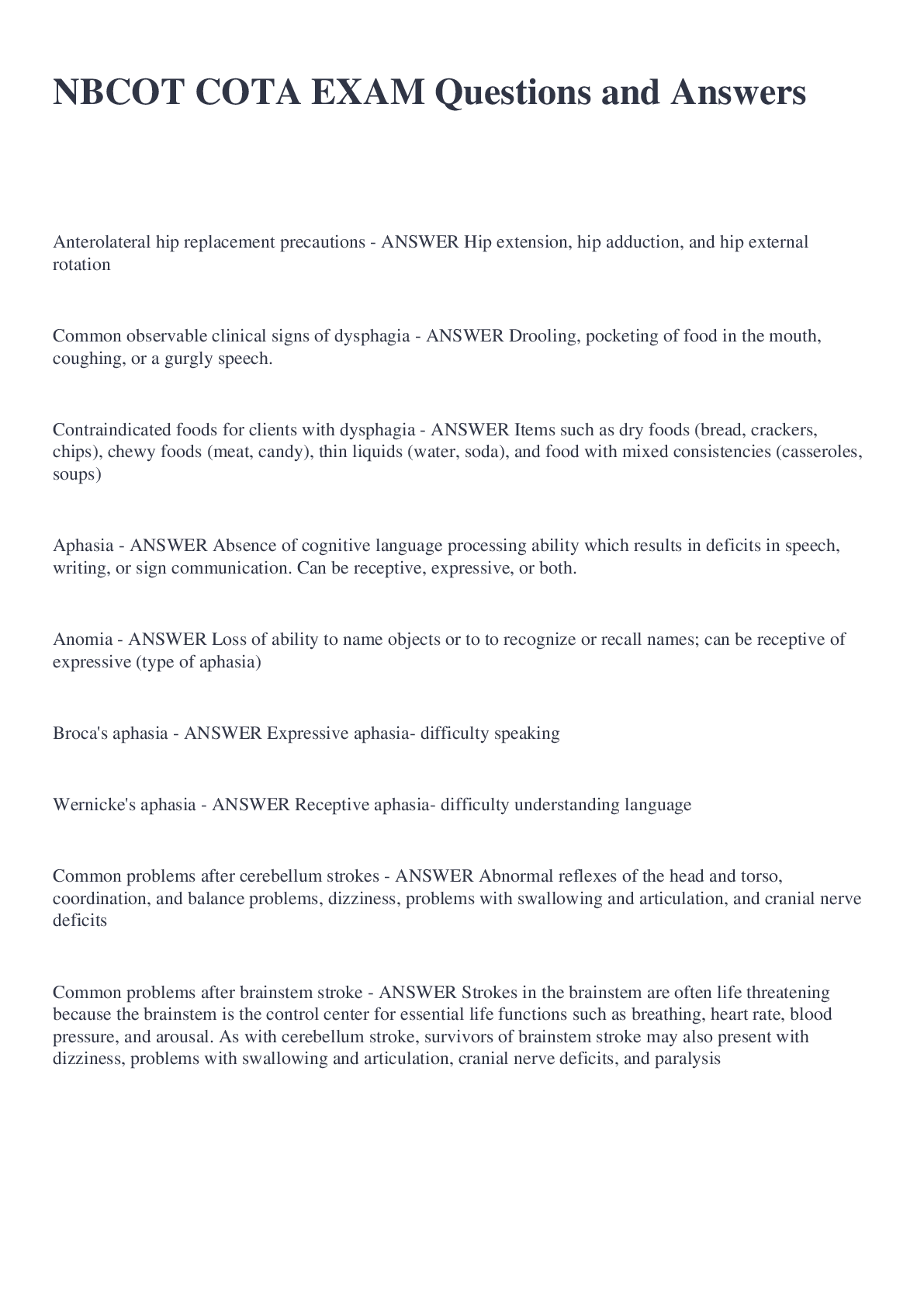
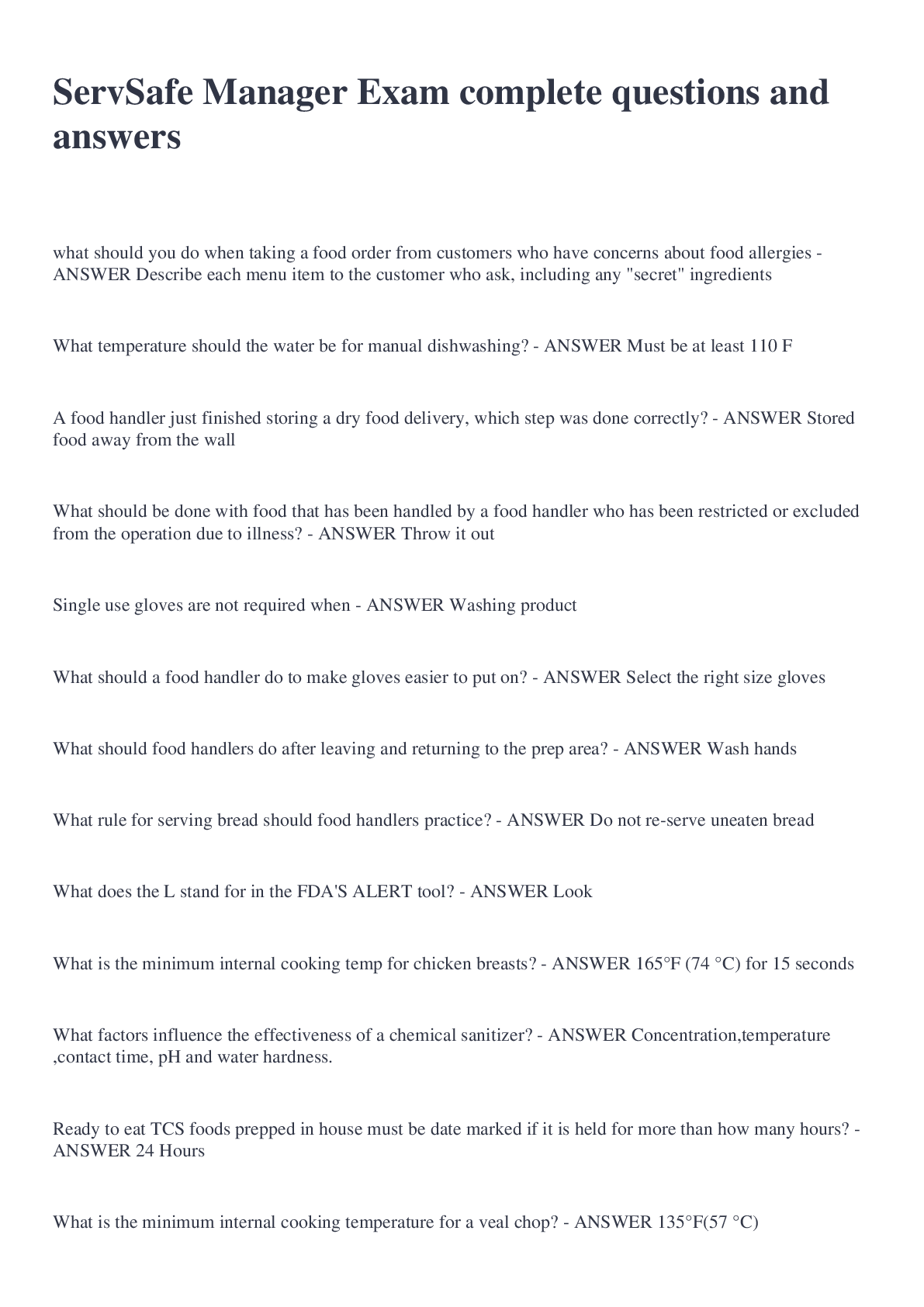
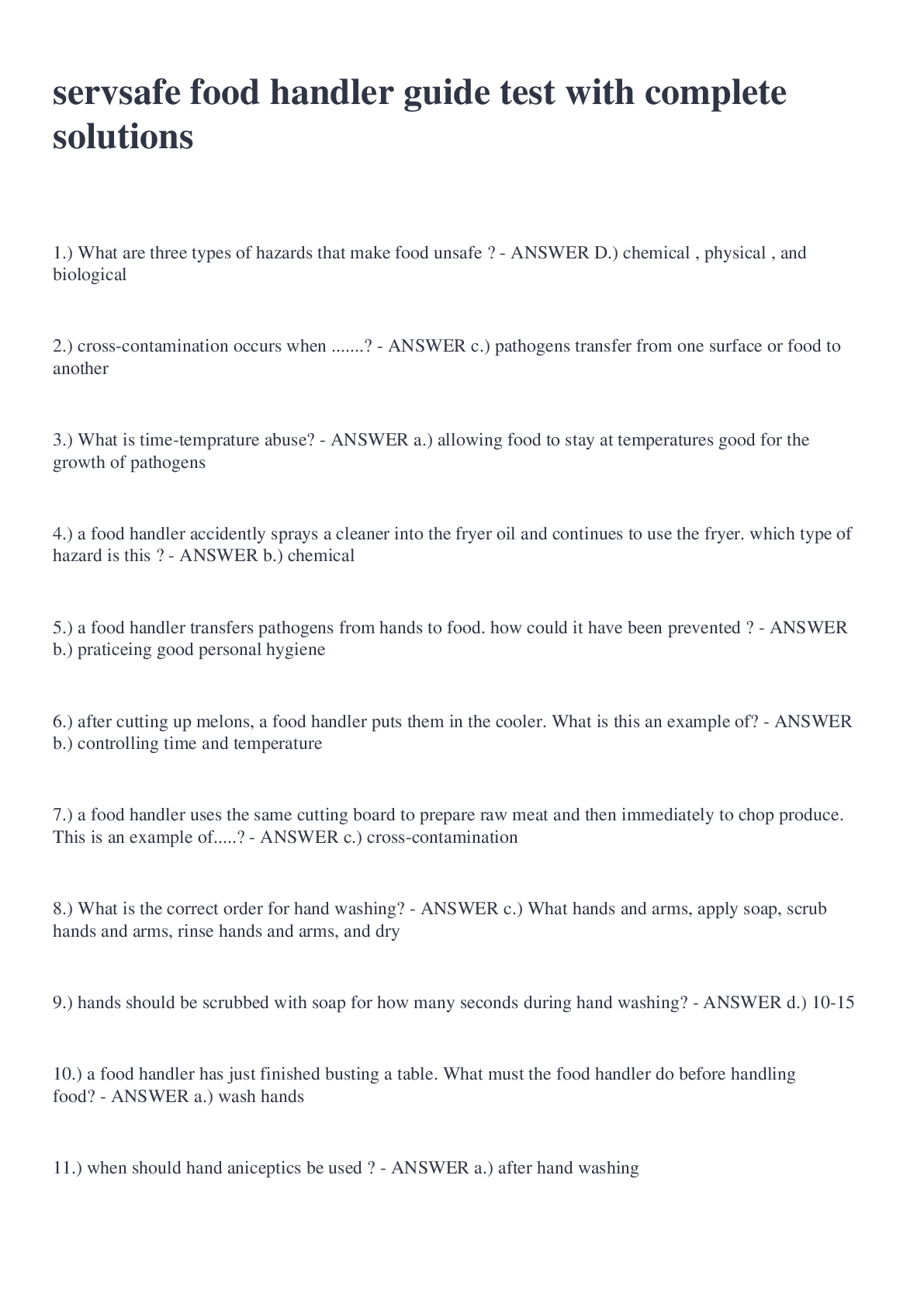
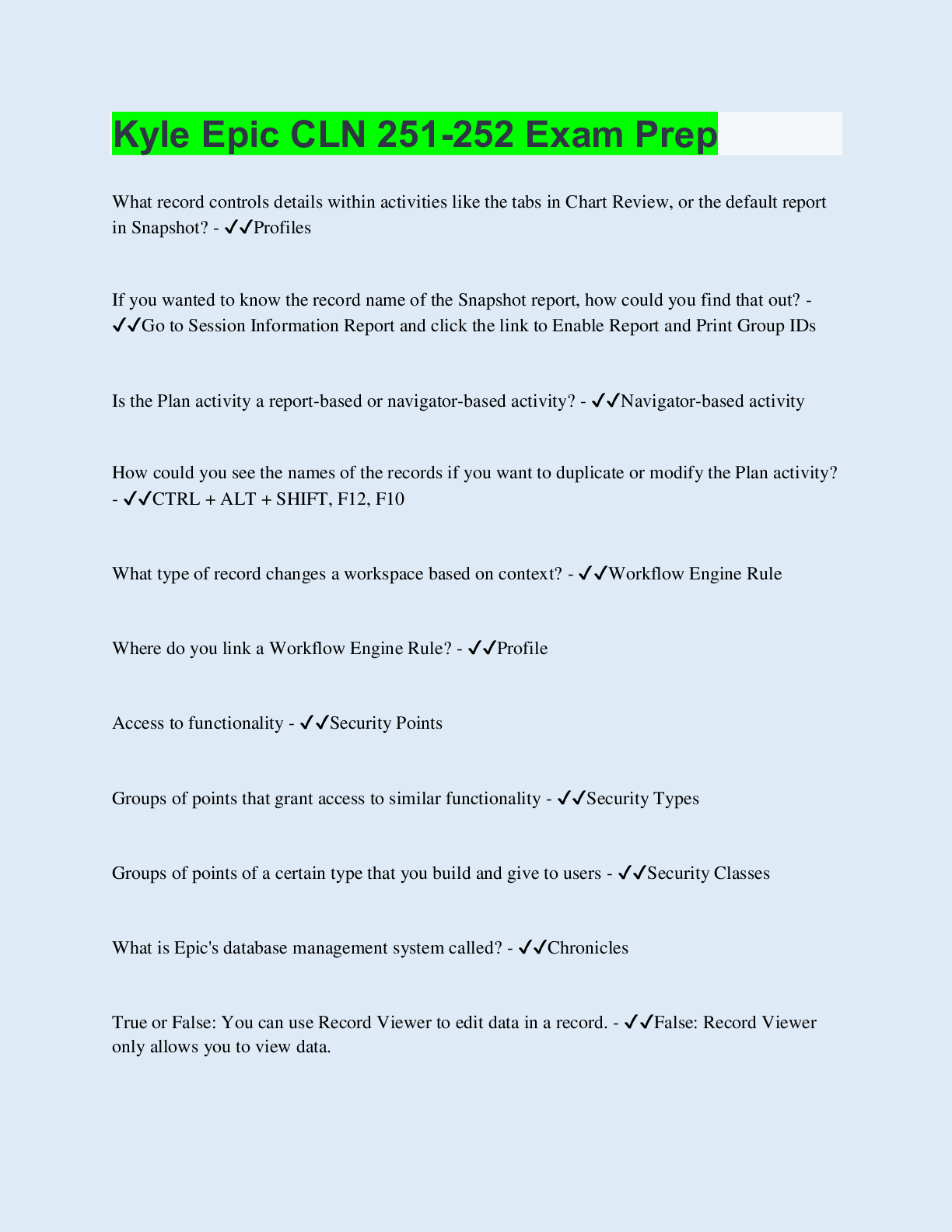
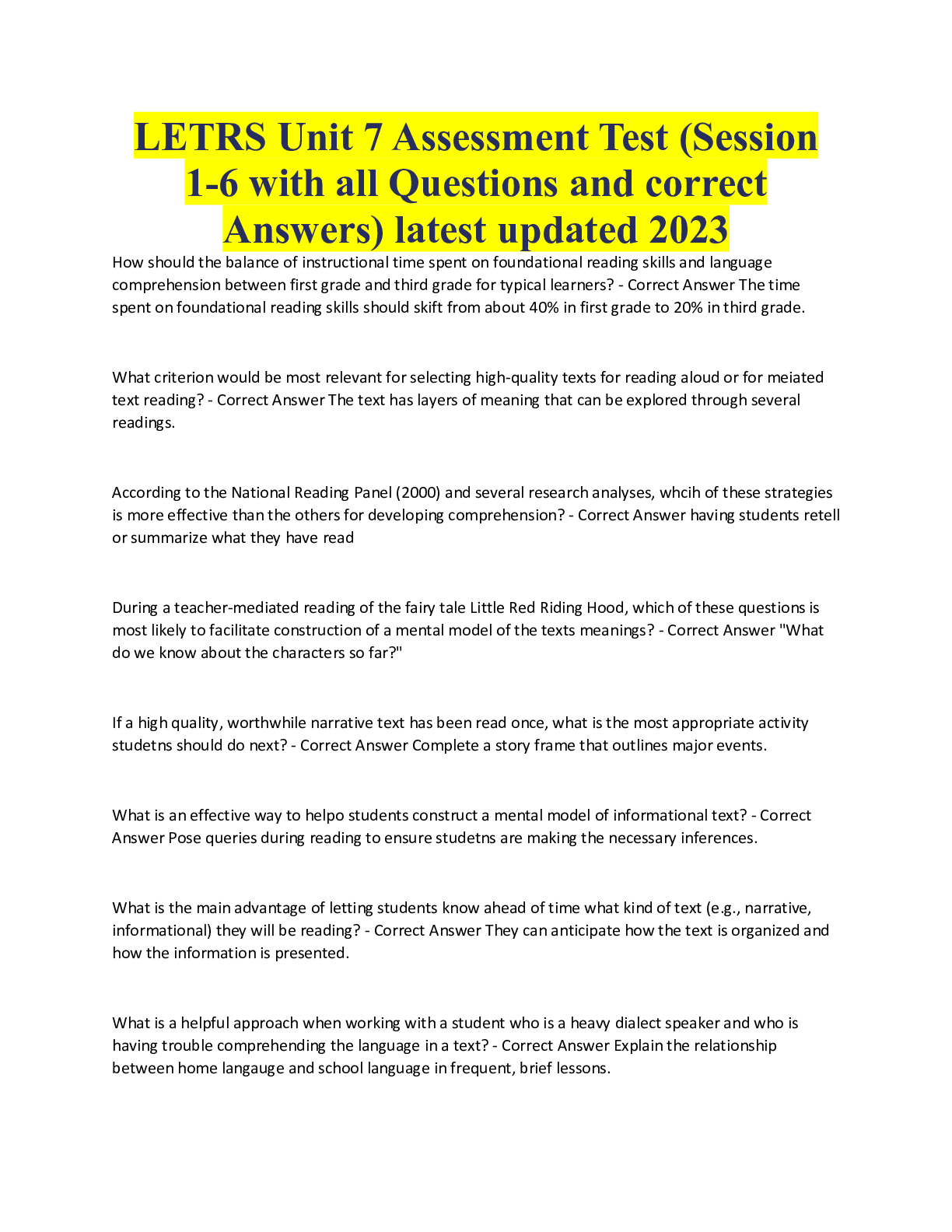






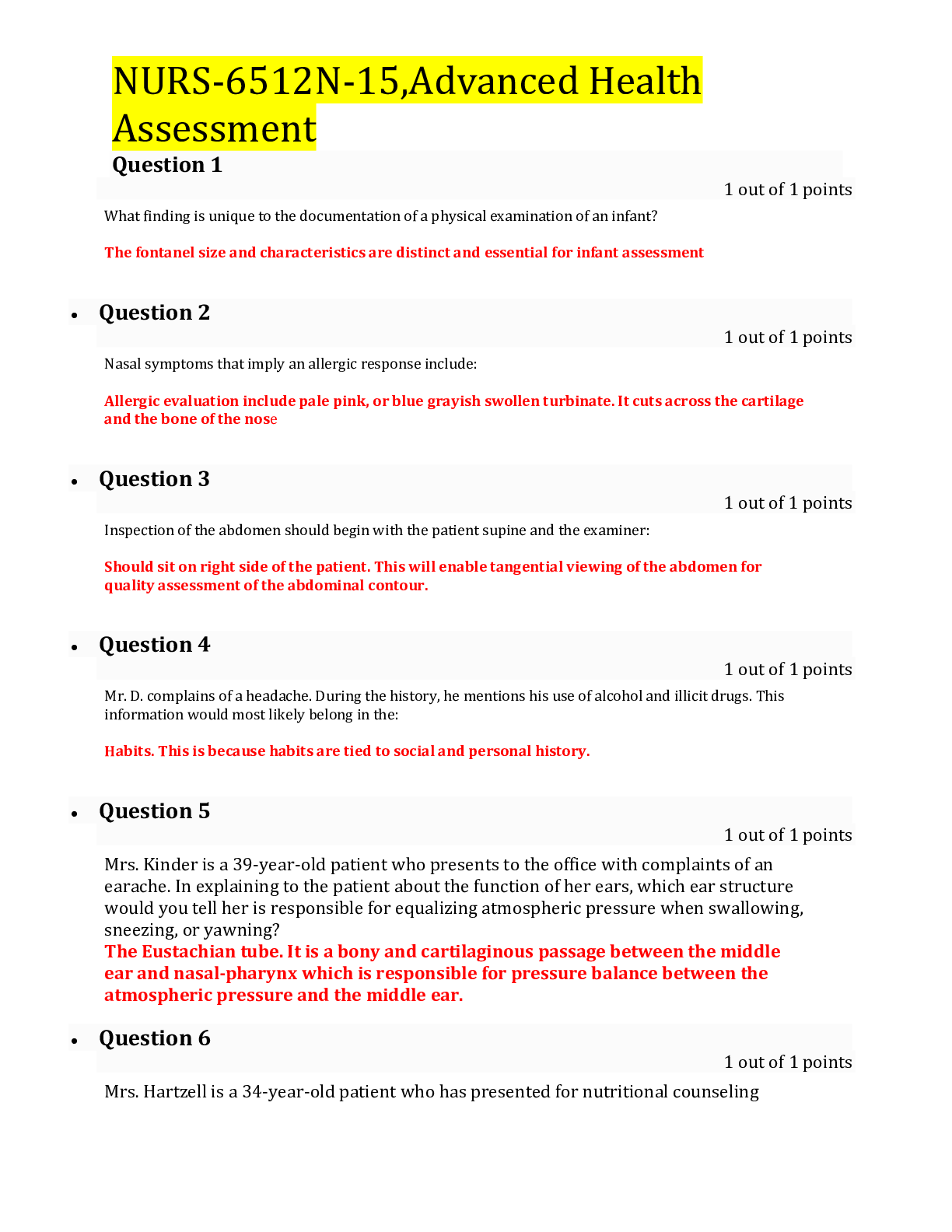
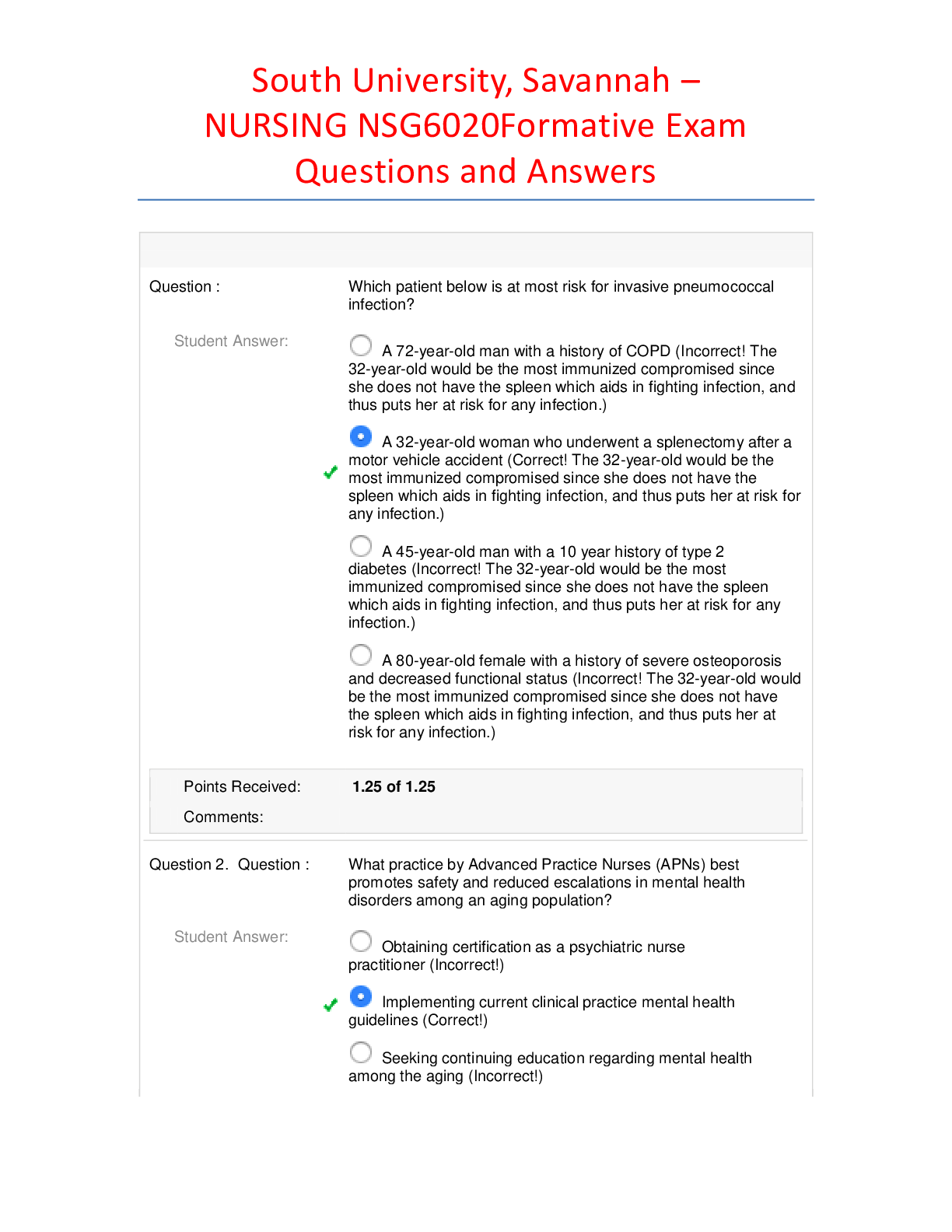


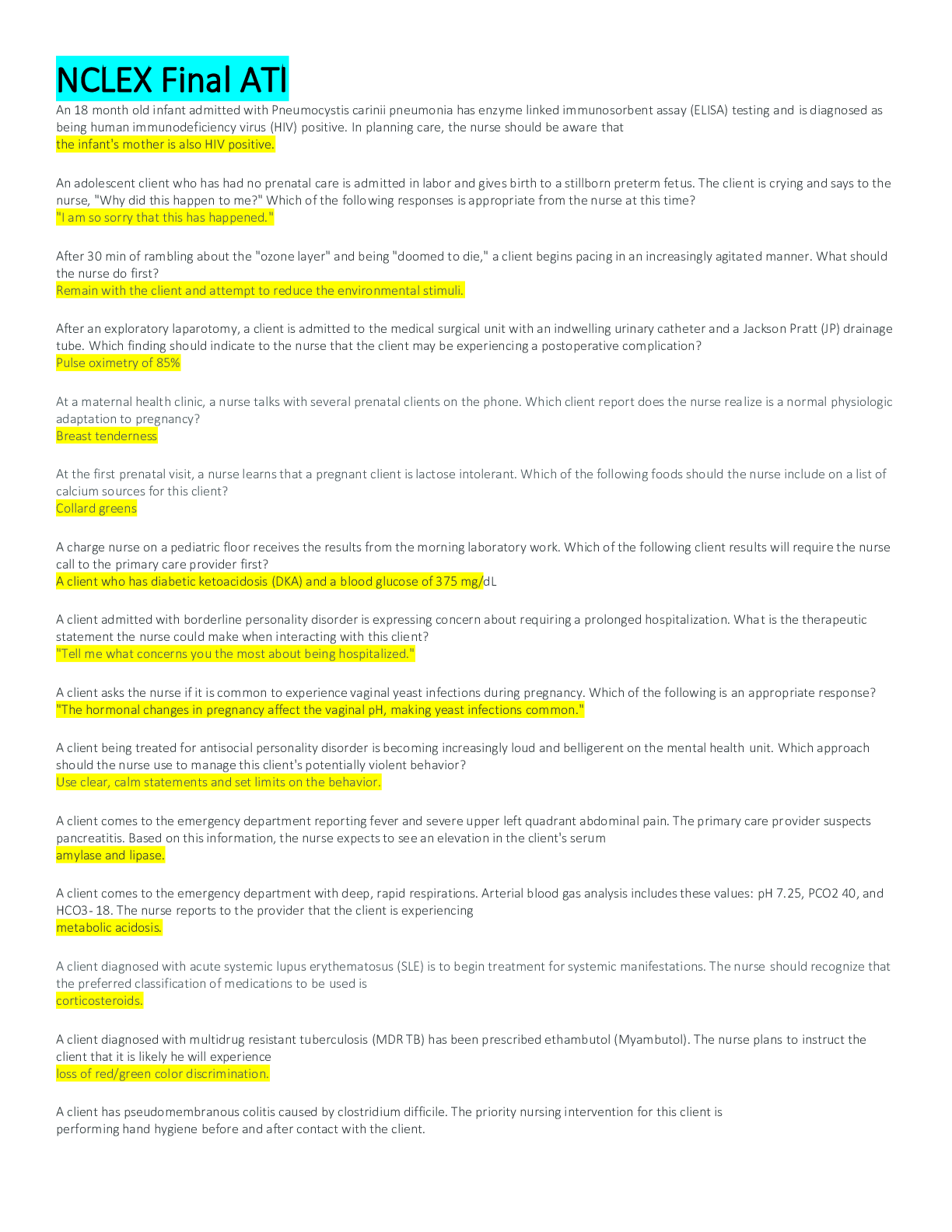
.png)

